- Home
- Classes
- Physics 150 – Nuclear Weapons – Physics, Policy, Proliferation – Fall 2025
- Physics 134 – Observational Astrophysics – Fall 2025
- Astro 1 Spring 2024
- INT 86TN Planetary Defense – Spring 2024
- Symmetry & Aesthetics in Contemporary Physics
- Physics 128 – Senior Lab – Winter 2026
- INT 184 – PL Interdisciplinary Honors Seminar – Weapons of Mass Destruction – Spring 2013
- Physics 150 – Modern Design and Fab – Fall 2019
- Physics 4 – Winter 2023
- Physics 141 – Optics – Spring 2019
- Physics 145L – Astrophysics Research
- Physics 199 – Independent Research
- Projects
- Interdisciplinary Center for Interstellar Exploration (iC)
- NASA Watts on the Moon
- Extrasolar Travelers
- CMB-S4 – Ground Based CMB Cosmology Program
- Wafer Scale Spacecraft
- PI-Multimodal Planetary Defense
- Lunar Rover Project
- DE-STAR
- Starlight
- GreenPol – CMB Cosmology
- PLANCK
- Starshot
- SETI
- Small Projects
- Previous Projects
- Facilities
- People
- Net
- Outreach
- Media Links
- NASA Space Grant Student Scholarships
- Bright Stars – VoH
- ARC – Undergraduate Aerospace Research Coop
- POINT – Undergraduate Physics Organization for Innovation and Technology
- All Sky Camera Project
- Education and Public Outreach
- Gaucho Rocket Project
- Undergrad Research Opportunities
- The Space Race
- Misc
- Papers
Wafer Scale Spacecraft
Design, Fabrication and Characterization of Initial Prototype Interstellar Robotic Systems
Project Overview
Initial interstellar missions will require a complete reevaluation and redesign of the space systems of today. The objective of the Wafer Scale Spacecraft Development program (WSSD) at the University of California Santa Barbara (UCSB) is to design, develop, assemble and characterize the initial prototypes of these robotic platforms in an attempt to pave a path forward for future innovation and exploration. This program, which is just one venture of the UCSB Experimental Cosmology Group’s Electronic and Advanced Systems Laboratory (UCSB Deepspace EAS), focuses on leveraging continued advances in semiconductor and photonics technologies to recognize and efficiently address the many complexities associated with long duration autonomous interstellar mission.
System Evolution
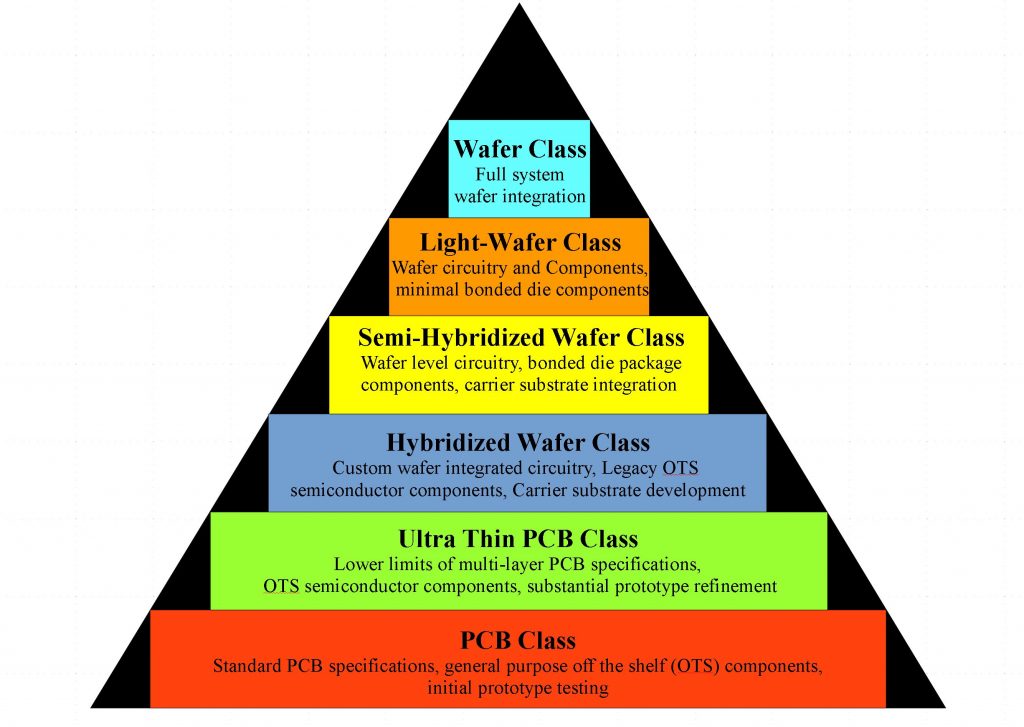
Projected Wafer Scale Spacecraft Evolution
As with any complex system, whether natural or man-made, wafer scale spacecraft technology can be projected to follow a steady evolutionary path. Through continuous iterations, both functionality and efficiency of the system will increase over time, while size and mass will decrease. Initial prototypes have been based off of commercially available components and conventional printed circuit board (PCB) construction techniques, however as these technologies are pushed to their limits a transition to partial and eventually full wafer scale integration will be necessary. At this stage inorganic nanostructures and other various nanotechnologies will be utilized to reconstruct individual elements of the system onto a custom wafer. After much optimization and testing these wafers will then have the ability to be mass manufacture using preexisting techniques developed and employed by the semiconductor industry. This evolutionary structure will produce a spacecraft which can be manufacture by the thousands at an incredibly low cost.
Second Generation Printed Circuit Board Craft:
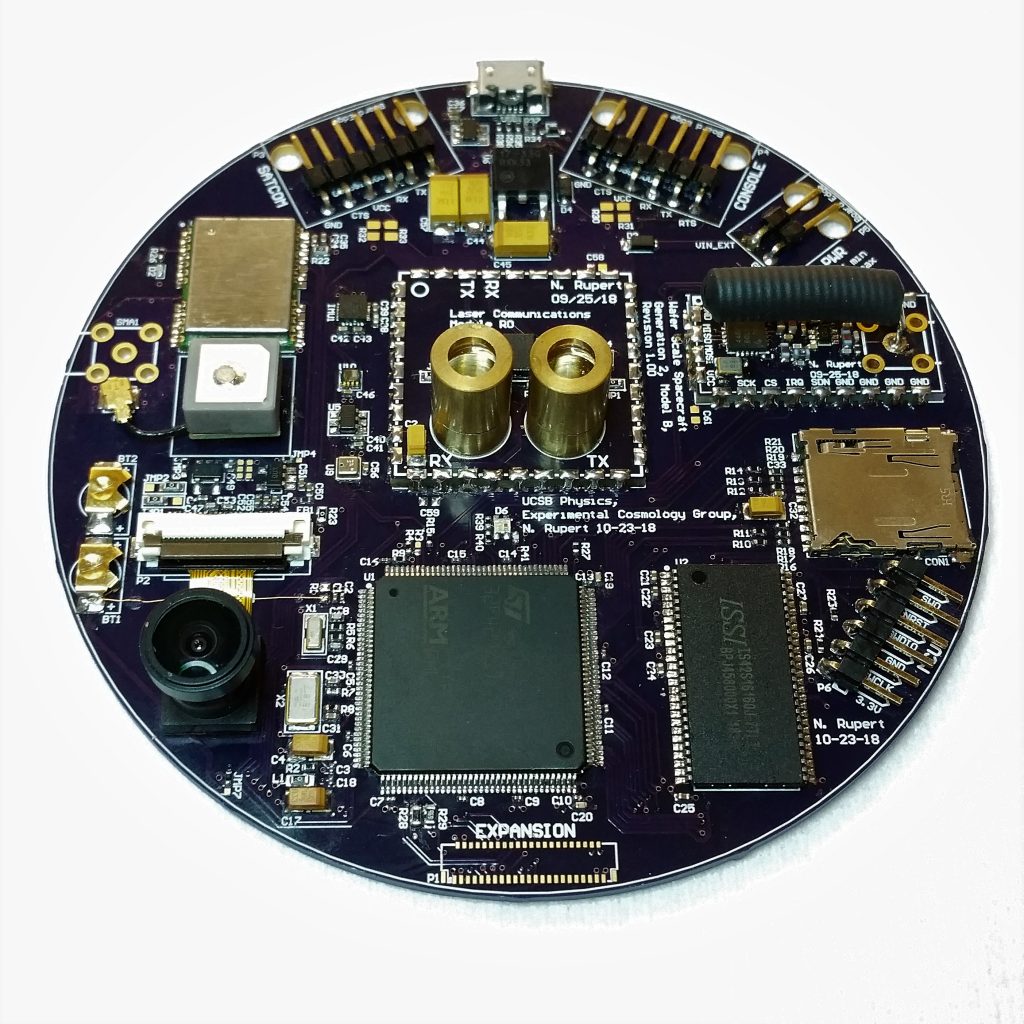
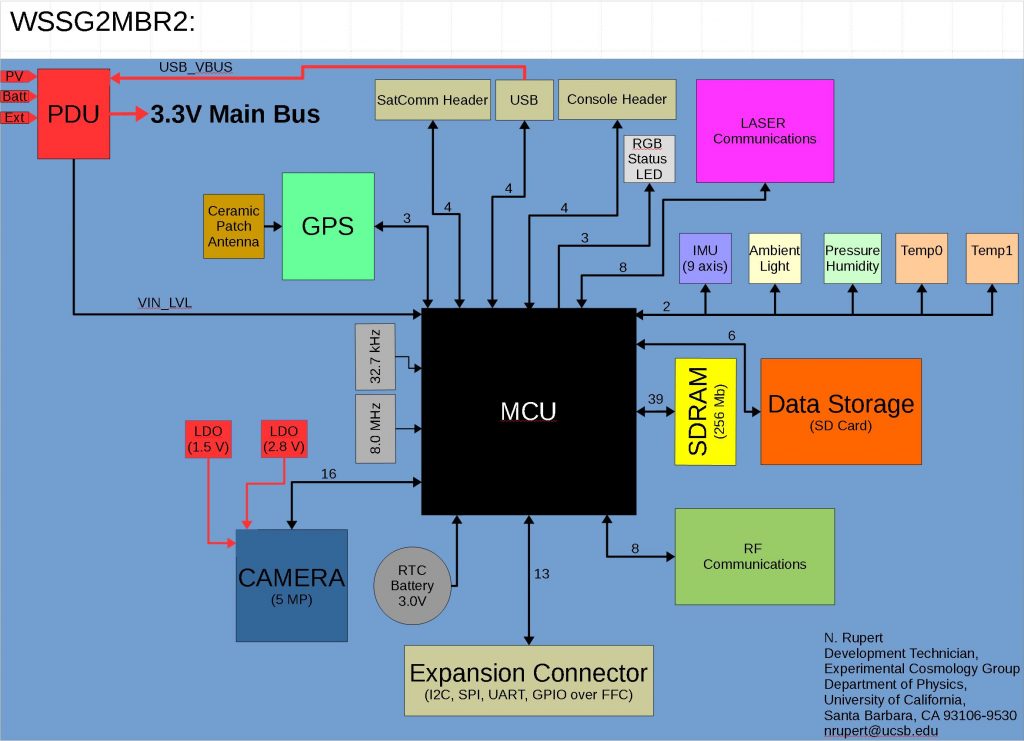
First Generation Printed Circuit Board Craft:
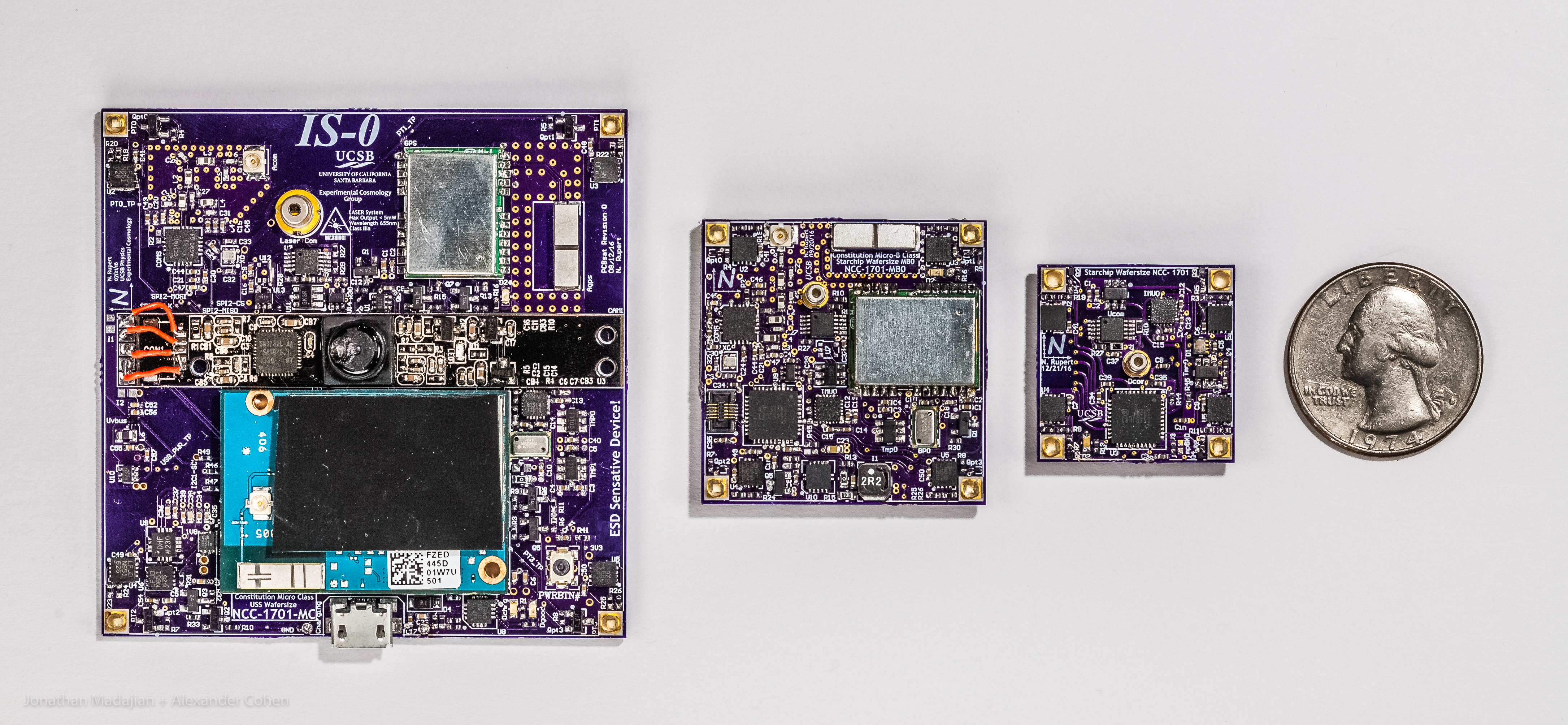
Initial Wafer Scale Spacecraft Prototype Model A (left), Model B (middle),
Model D (right) and a US Quarter
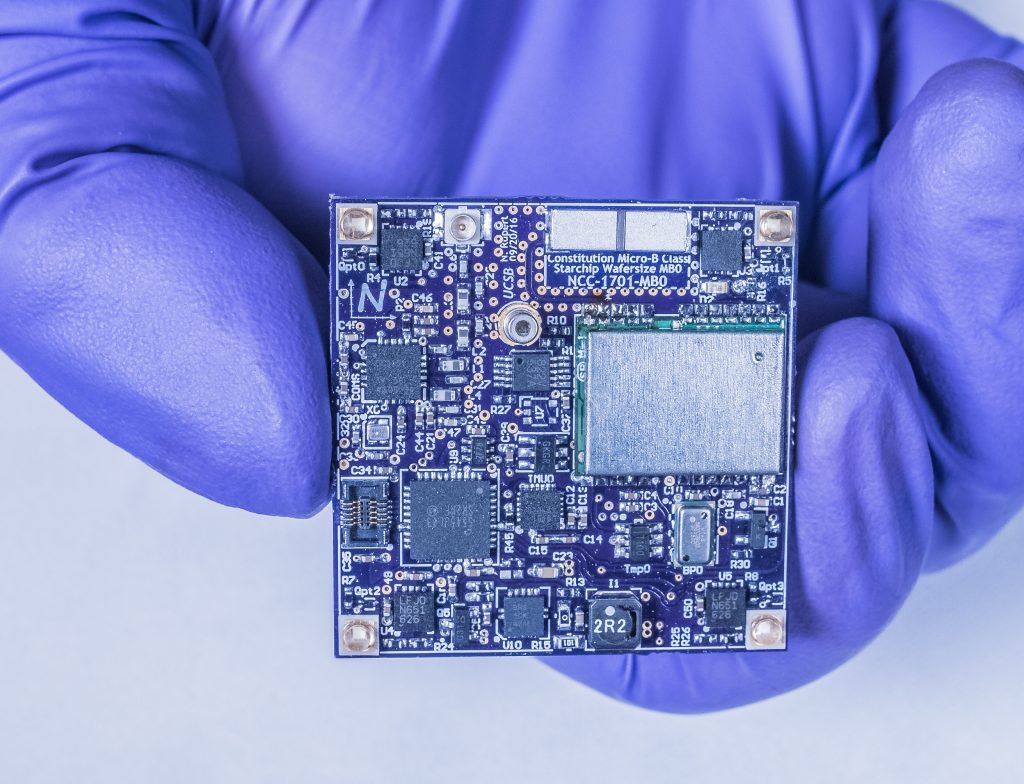
Initial Prototype Wafer Scale Spacecraft Model B
WSS Model A
The WSS Prototype Model A is the test bed on which all technologies and systems are initially employed. The unit has an Intel based embedded Linux system for ease of use and flexibility. After testing, optimization and miniturization each device is then transitioned to the smaller Model B for final implementation.
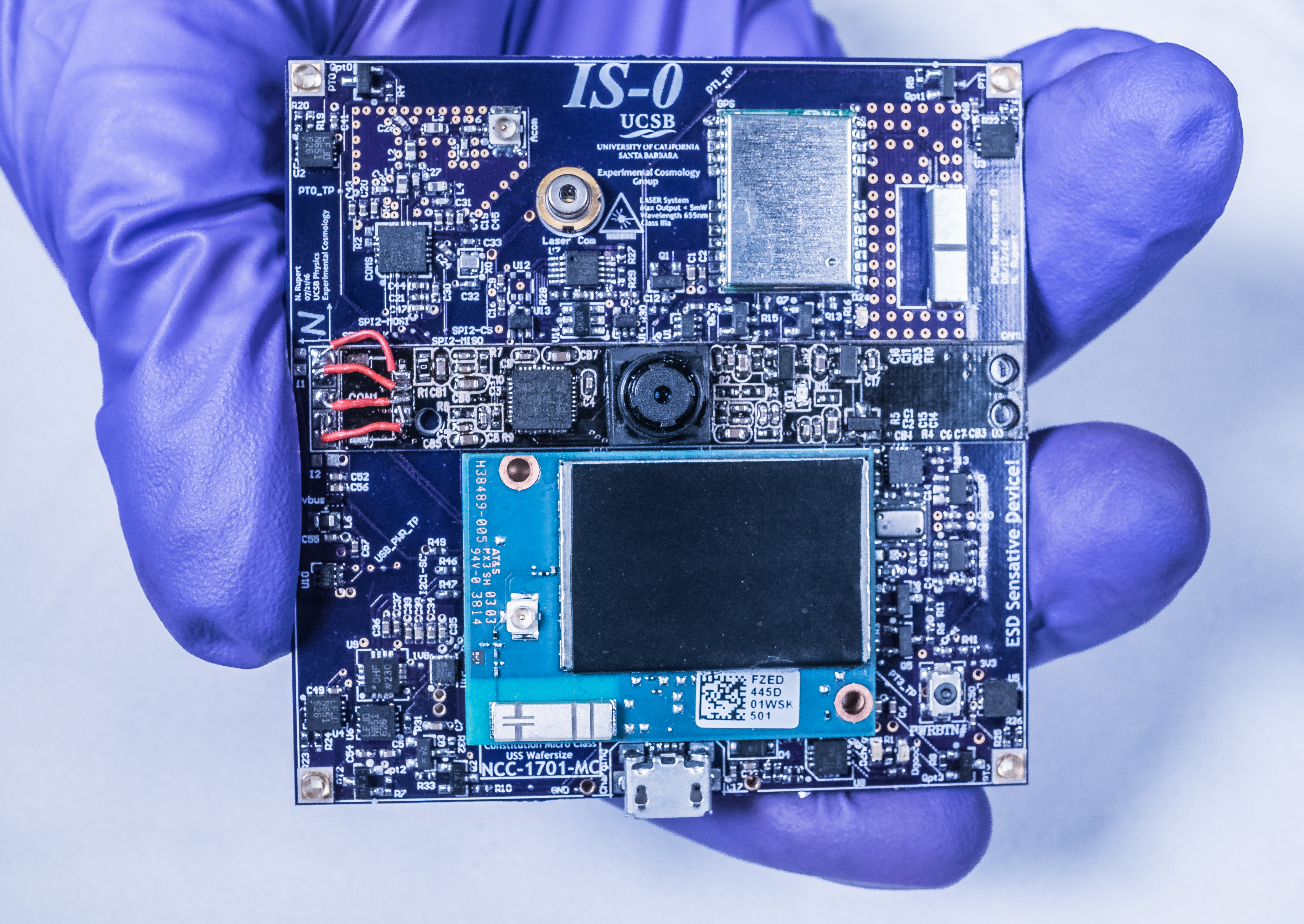
WSS Prototype Model A - Front
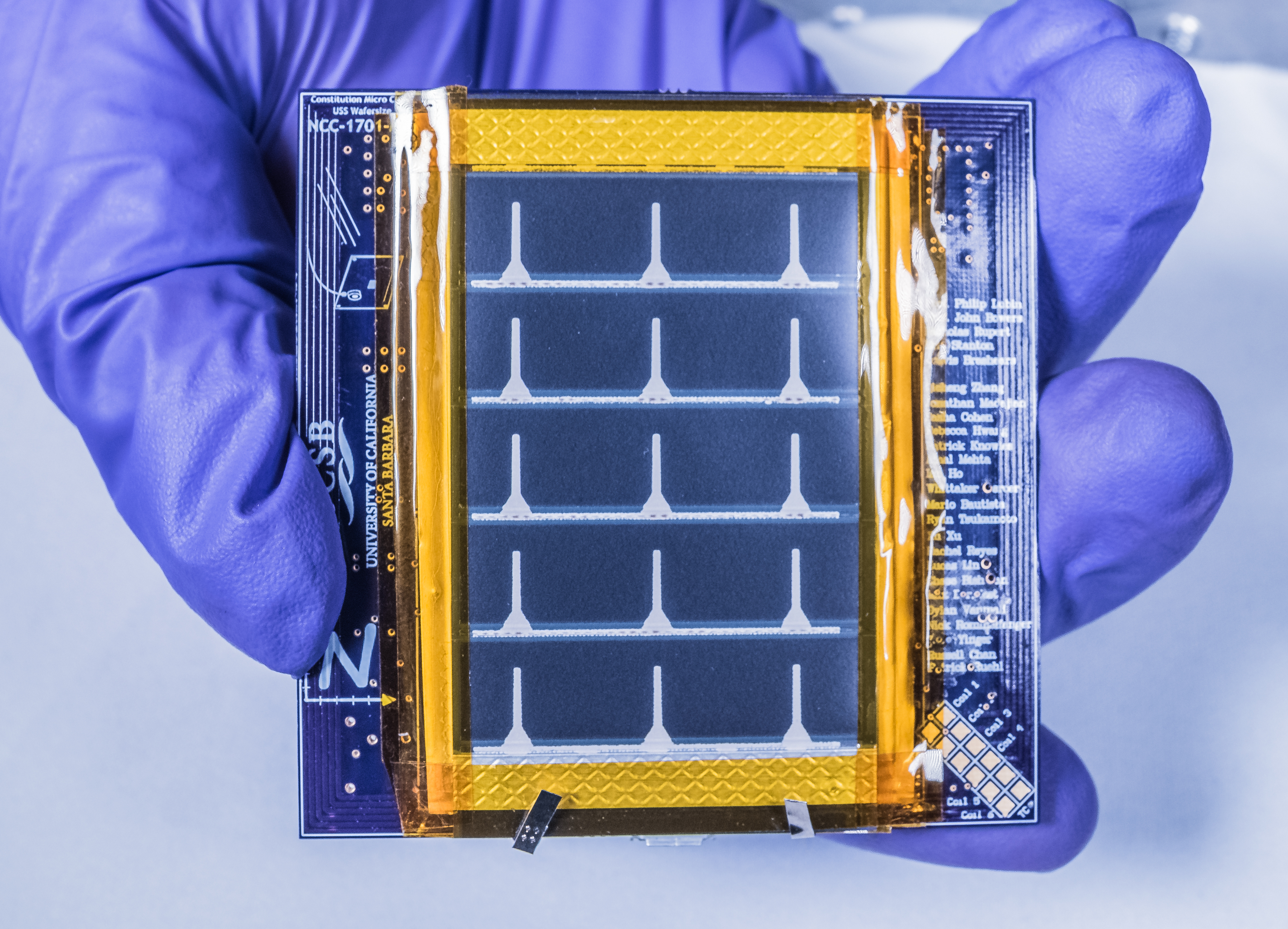
WSS Prototype Model A - Back
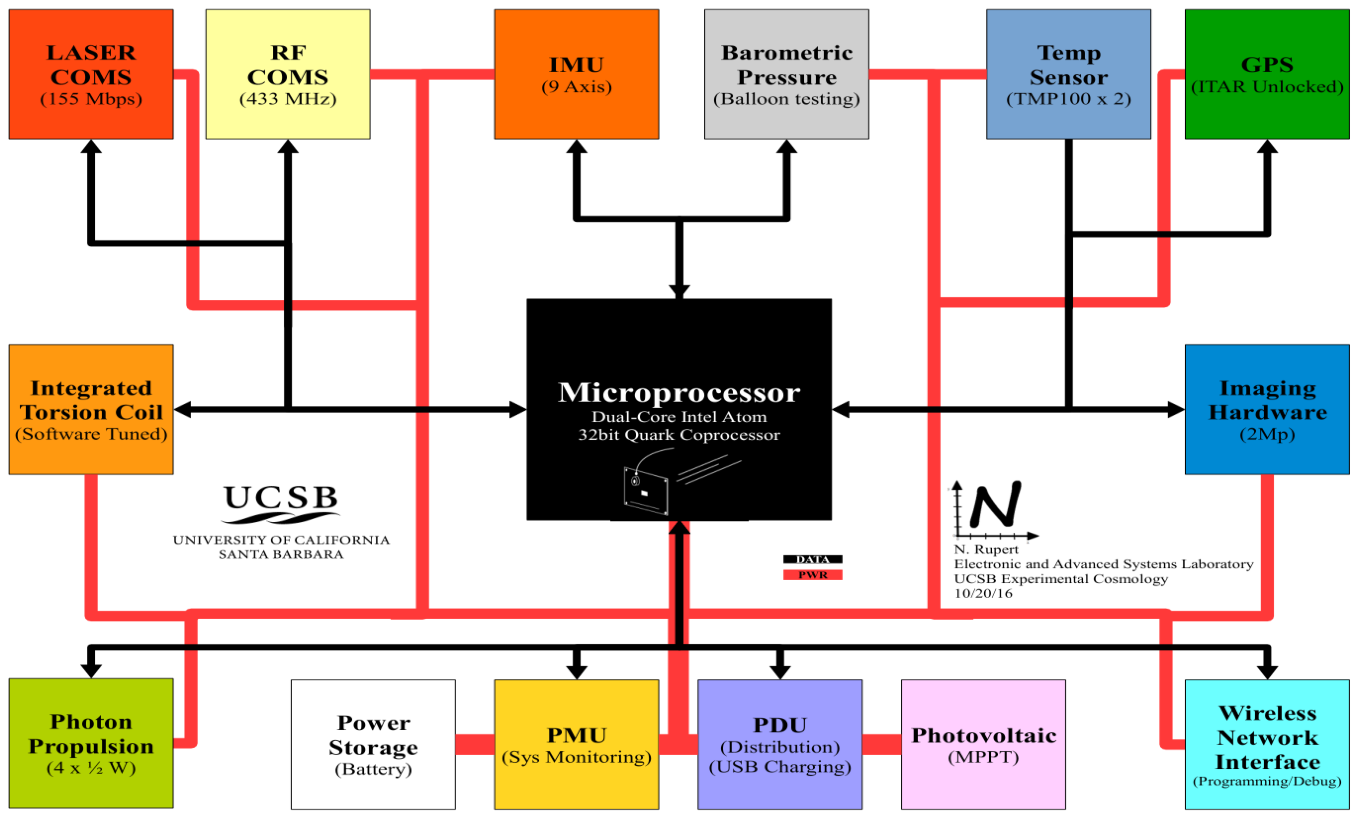
WSS Prototype Model A - Block Diagram
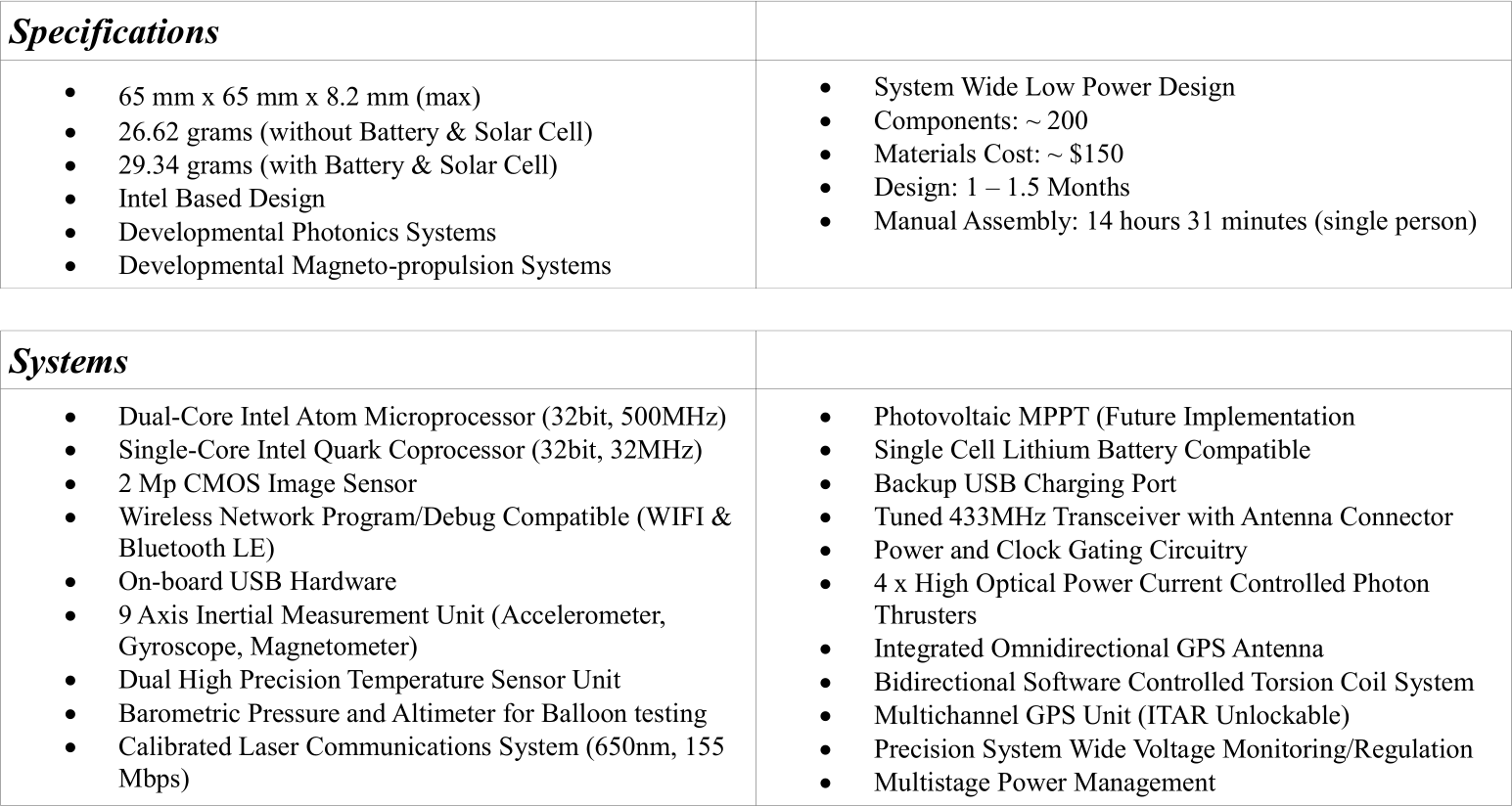
WSS Prototype Model A - Features
WSS Model B
The WSS Model B is the platform which will be utilized for initial low earth orbital flights, and eventually will make the transition onto a wafer substrate (Model C) Due to its small size and low mass, many units can fit into a single cubesat deployer, and thus “swarms”can be deployed in unison. This will allow for collection of large amounts of data and characterization of the craft on a more distributed scale.
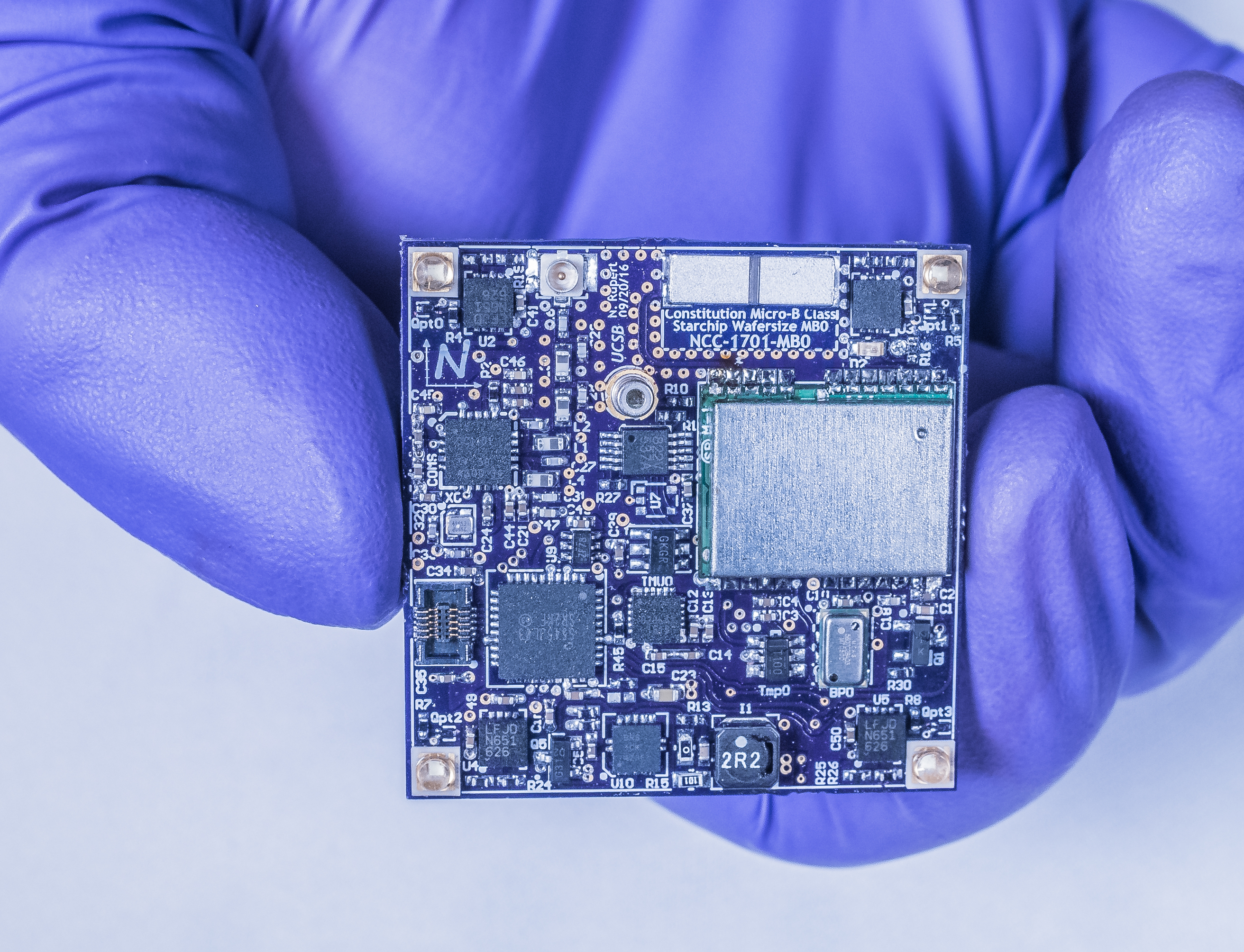
WSS Prototype Model B - Front
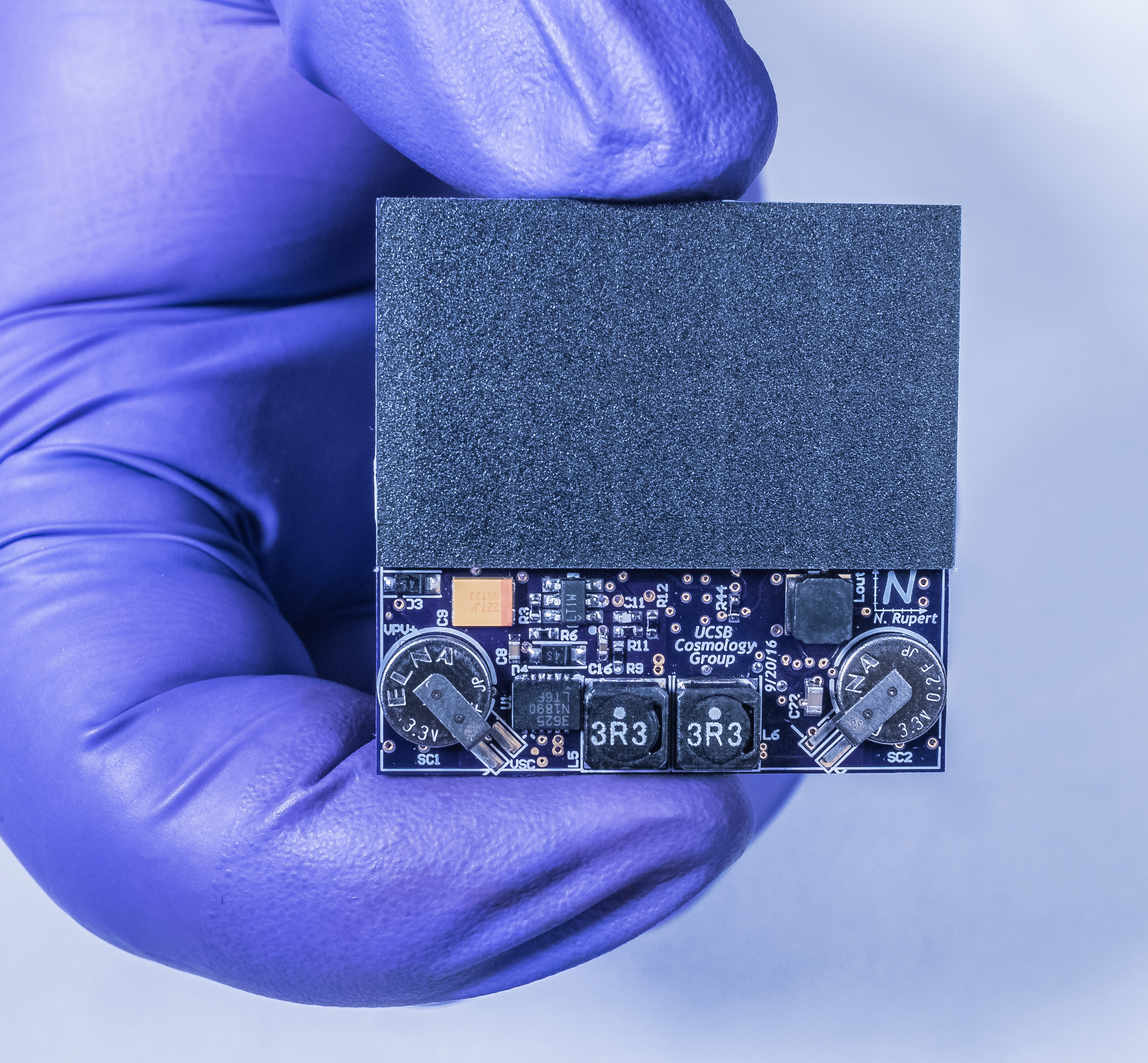
WSS Prototype Model B - Back
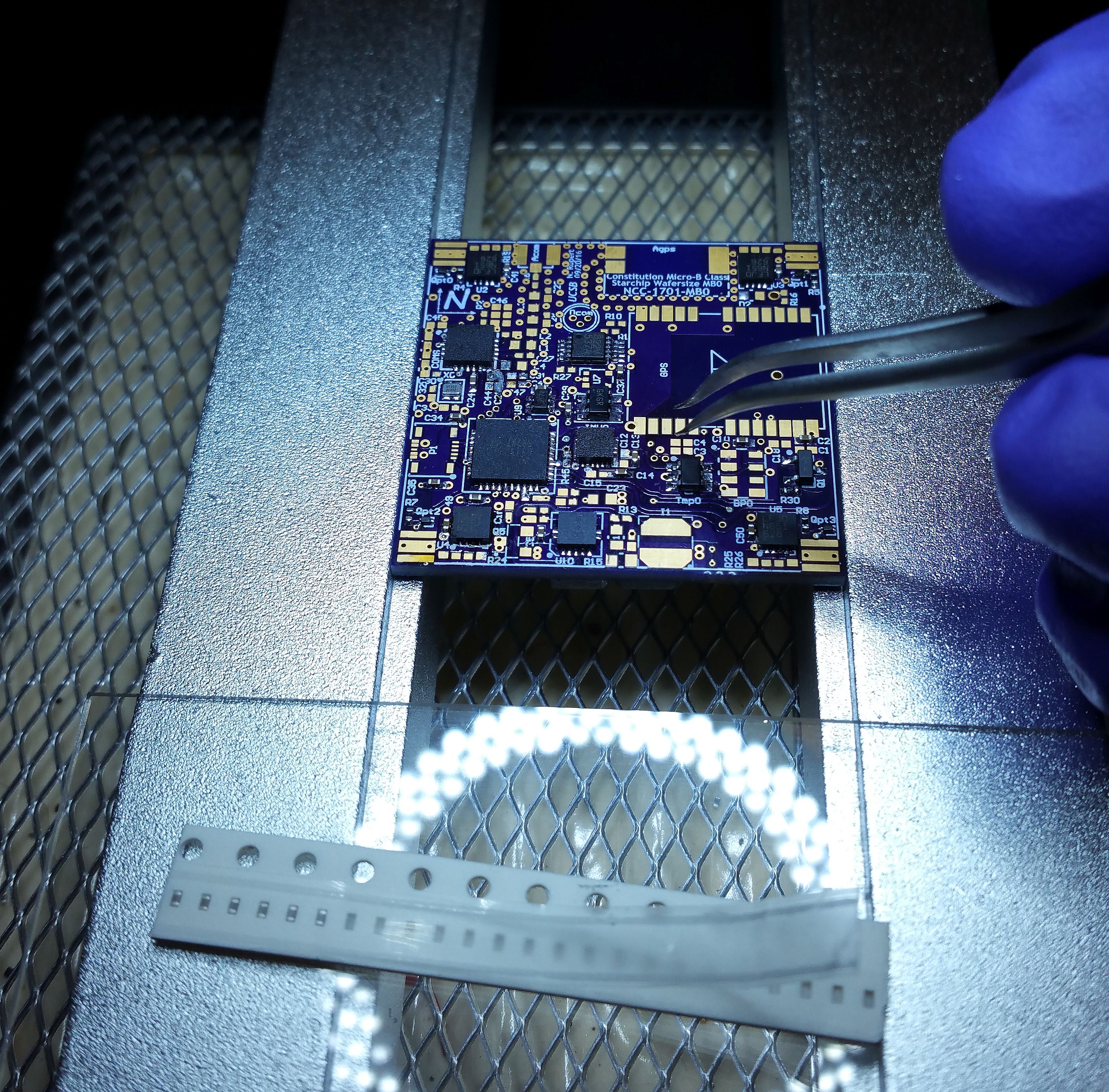
WSS Model B Assembly
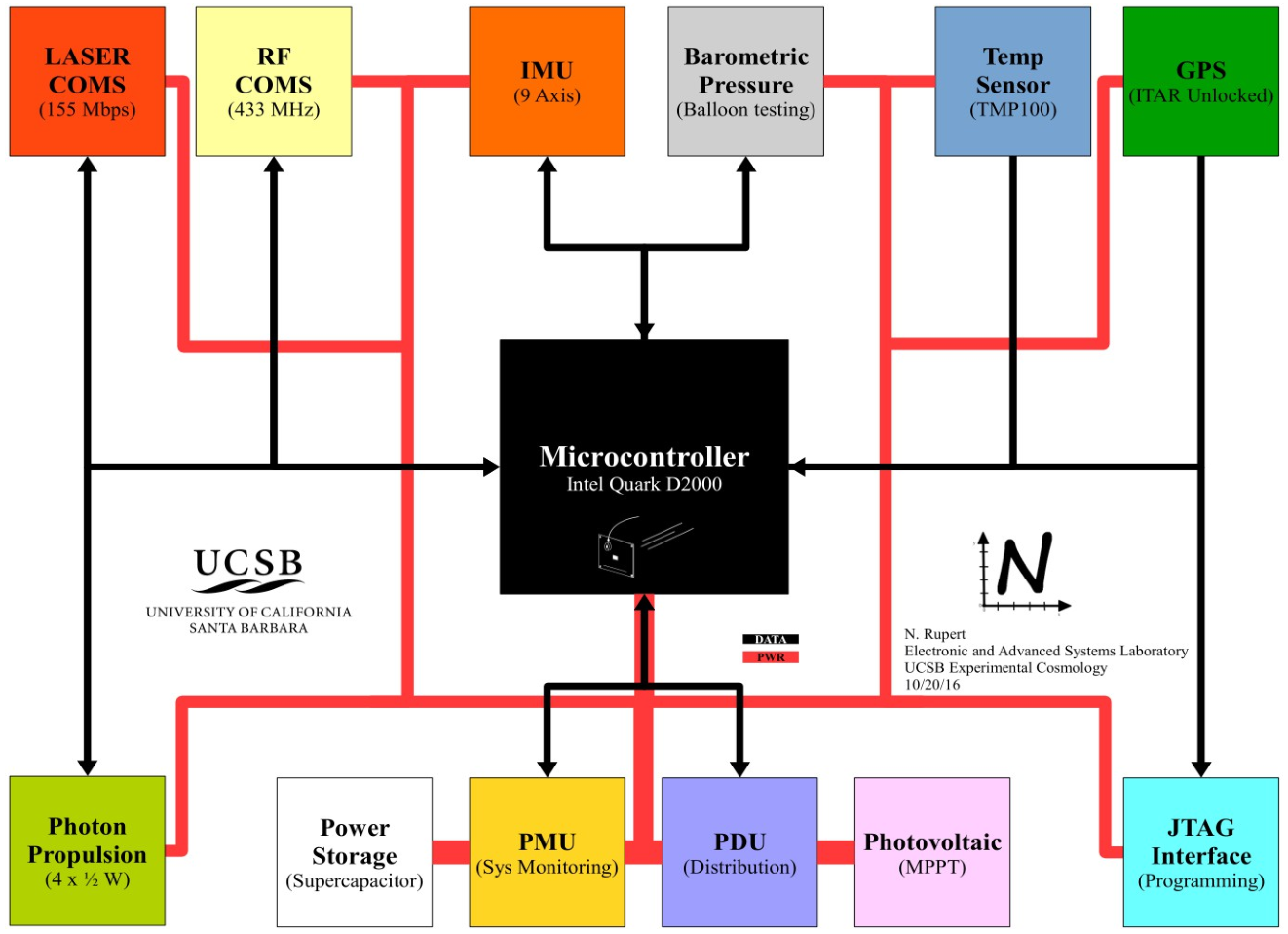
WSS Prototype Model B - Block Diagram
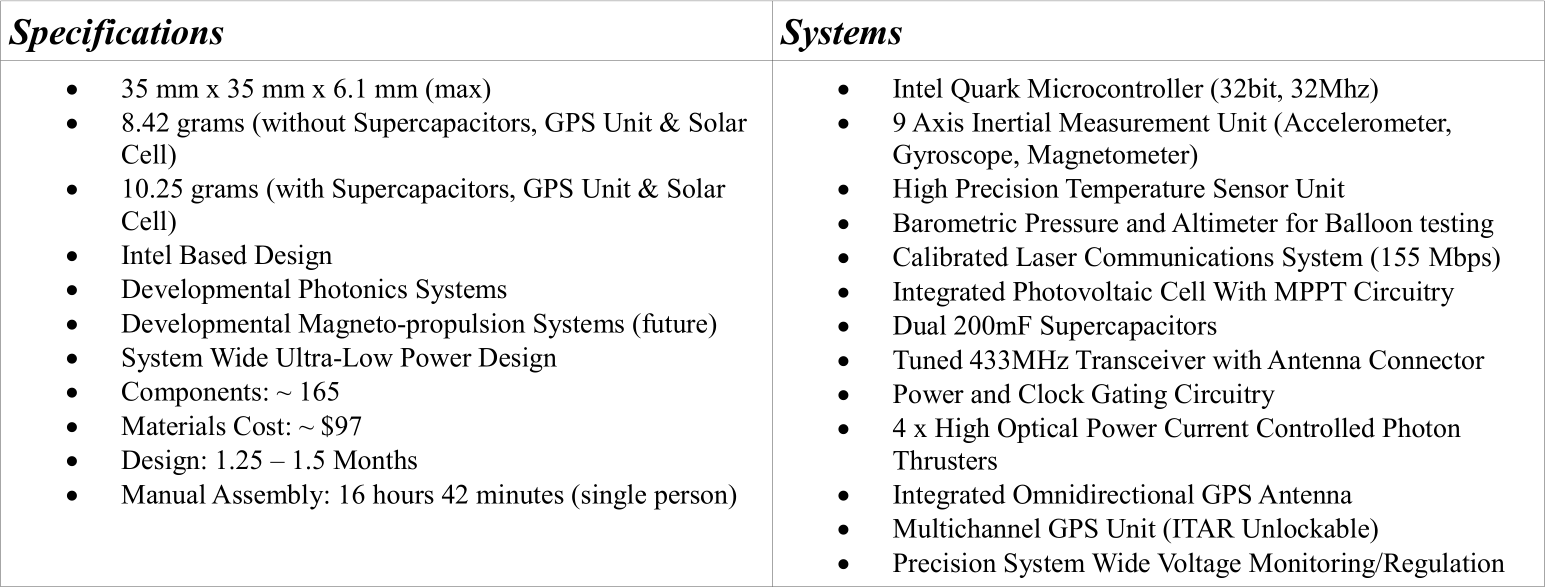
WSS Prototype Model B - Specifications
Toward Full Wafer Scale Spacecraft
We have begun prototype development of both Si and Ti wafer scale spacecraft that are deep reactive ion etched (DRIE) with an etched hexagonal backing structure to reduce the mass and maintain high strength. Some examples are shown below.


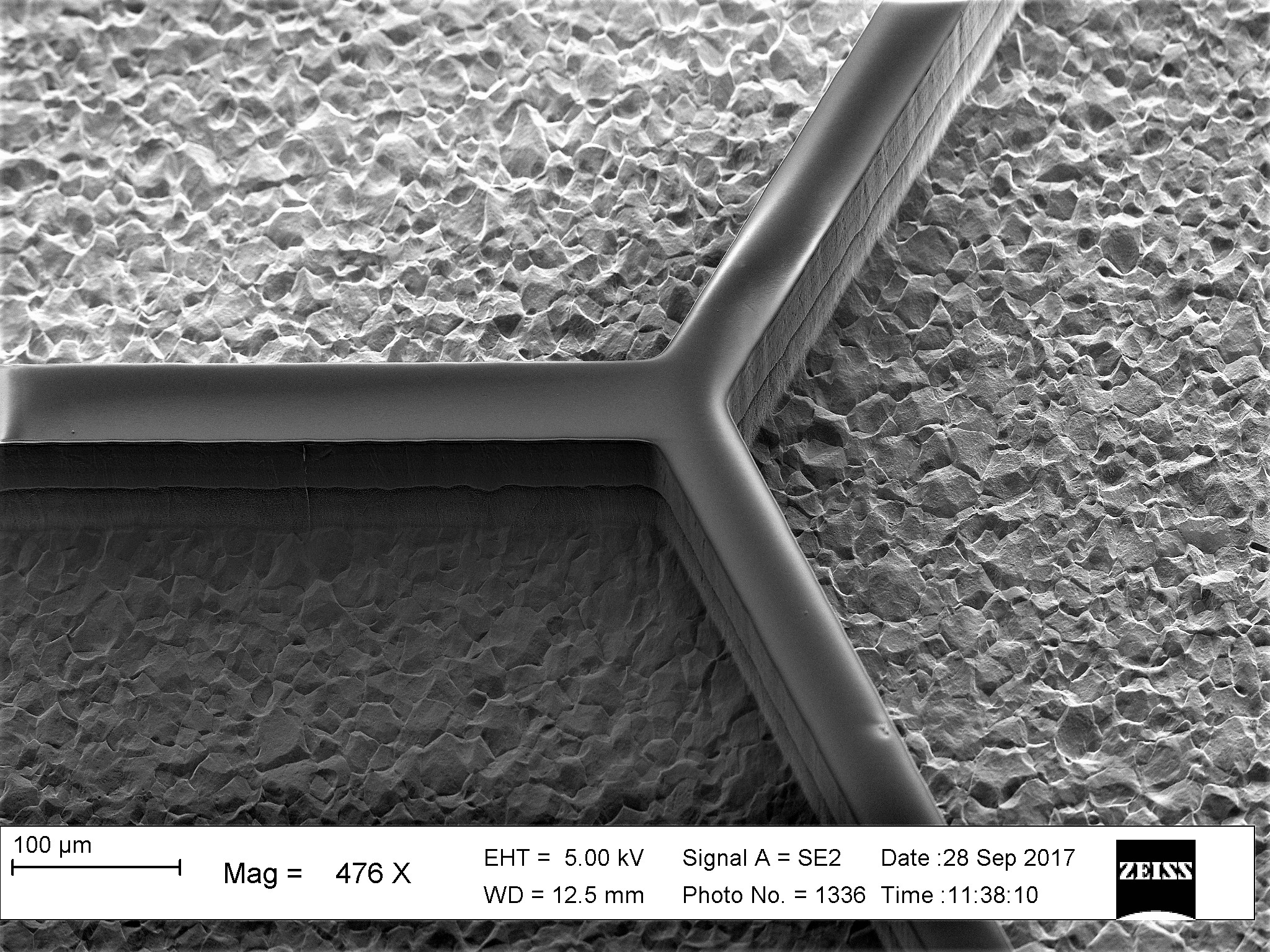

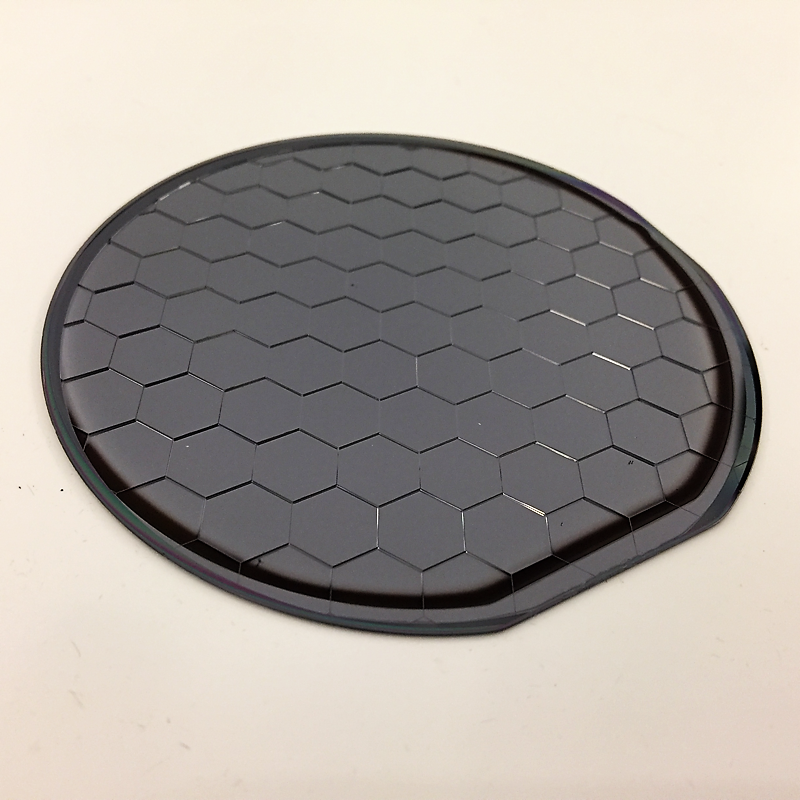

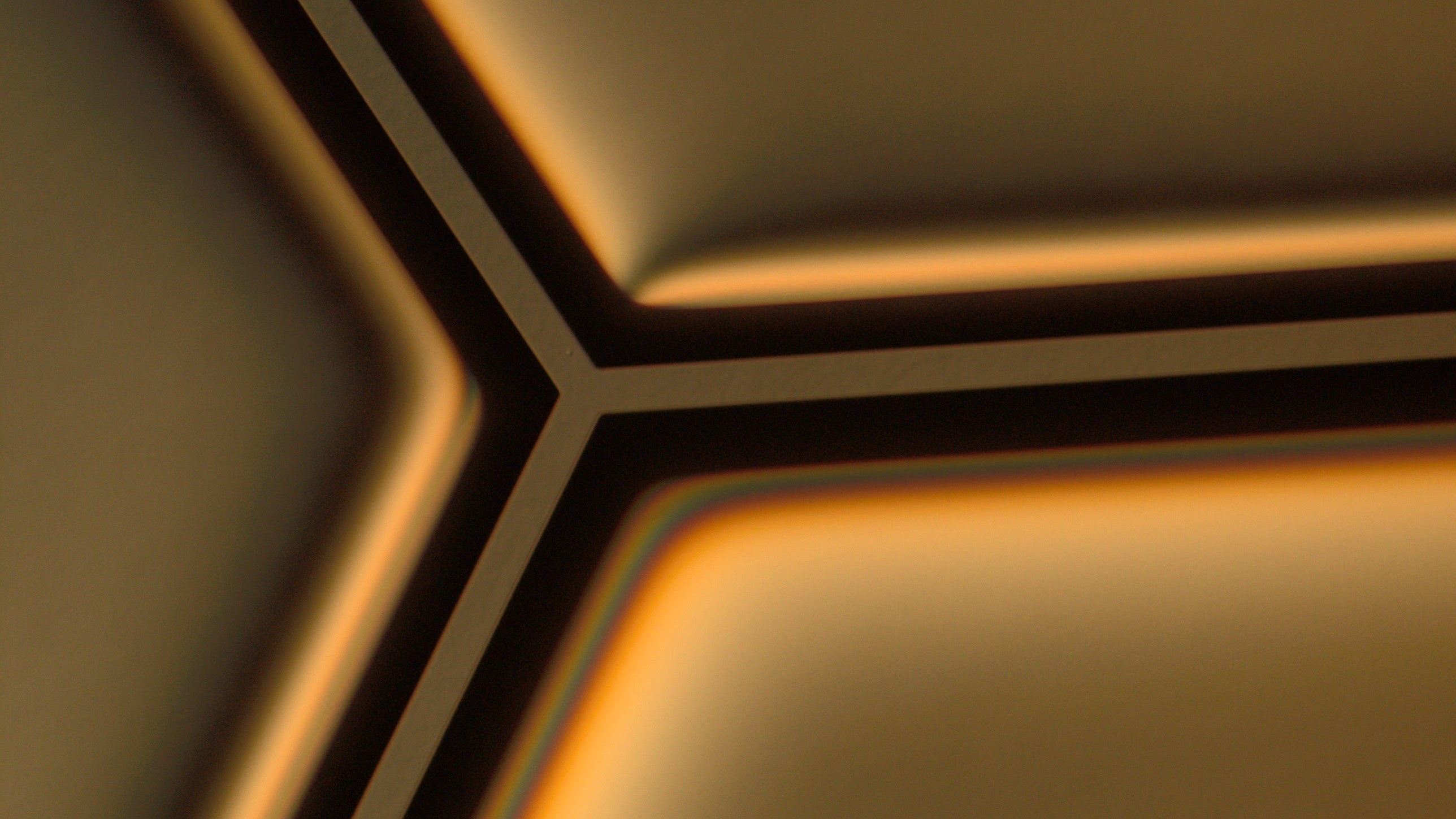

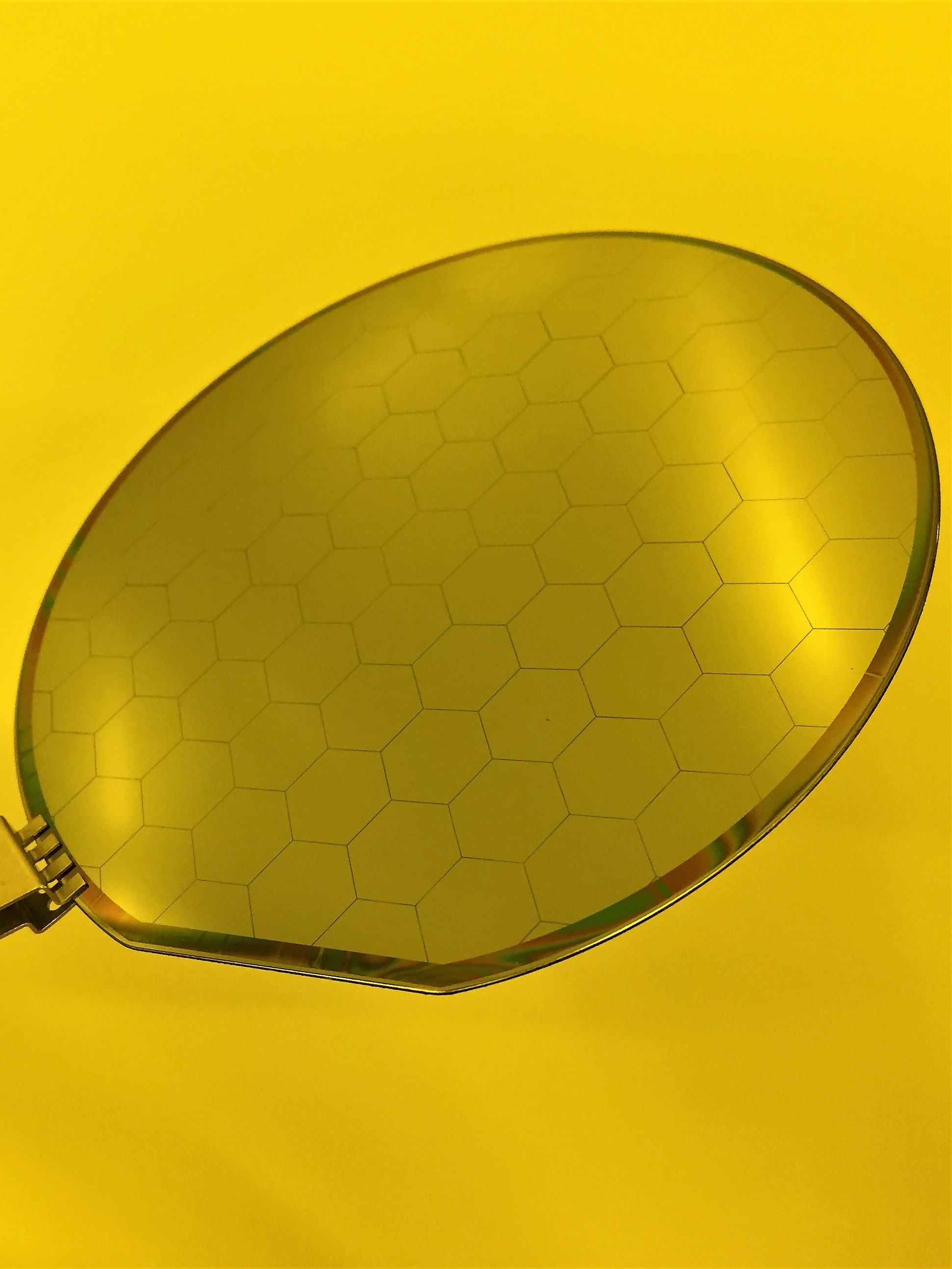

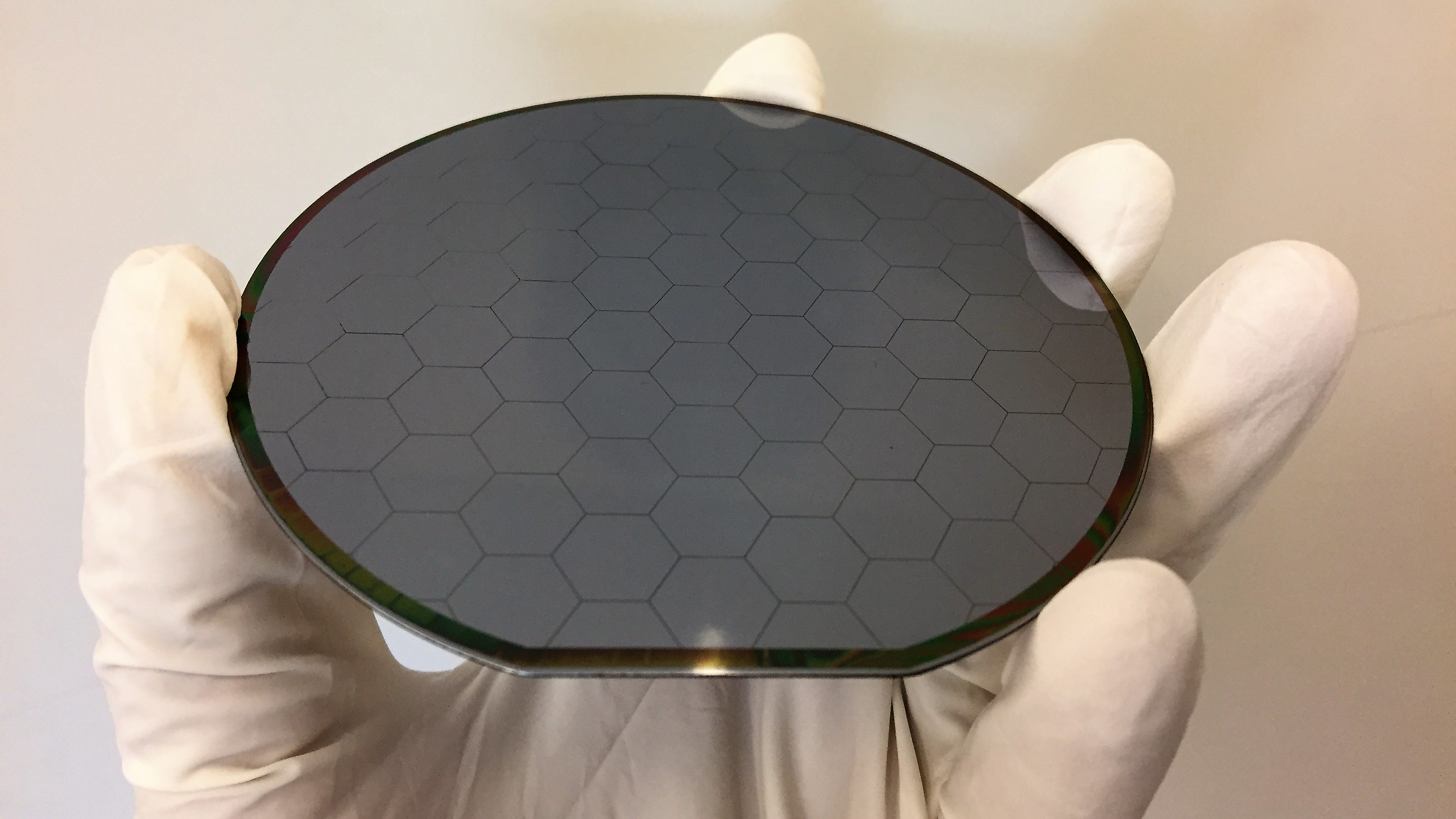

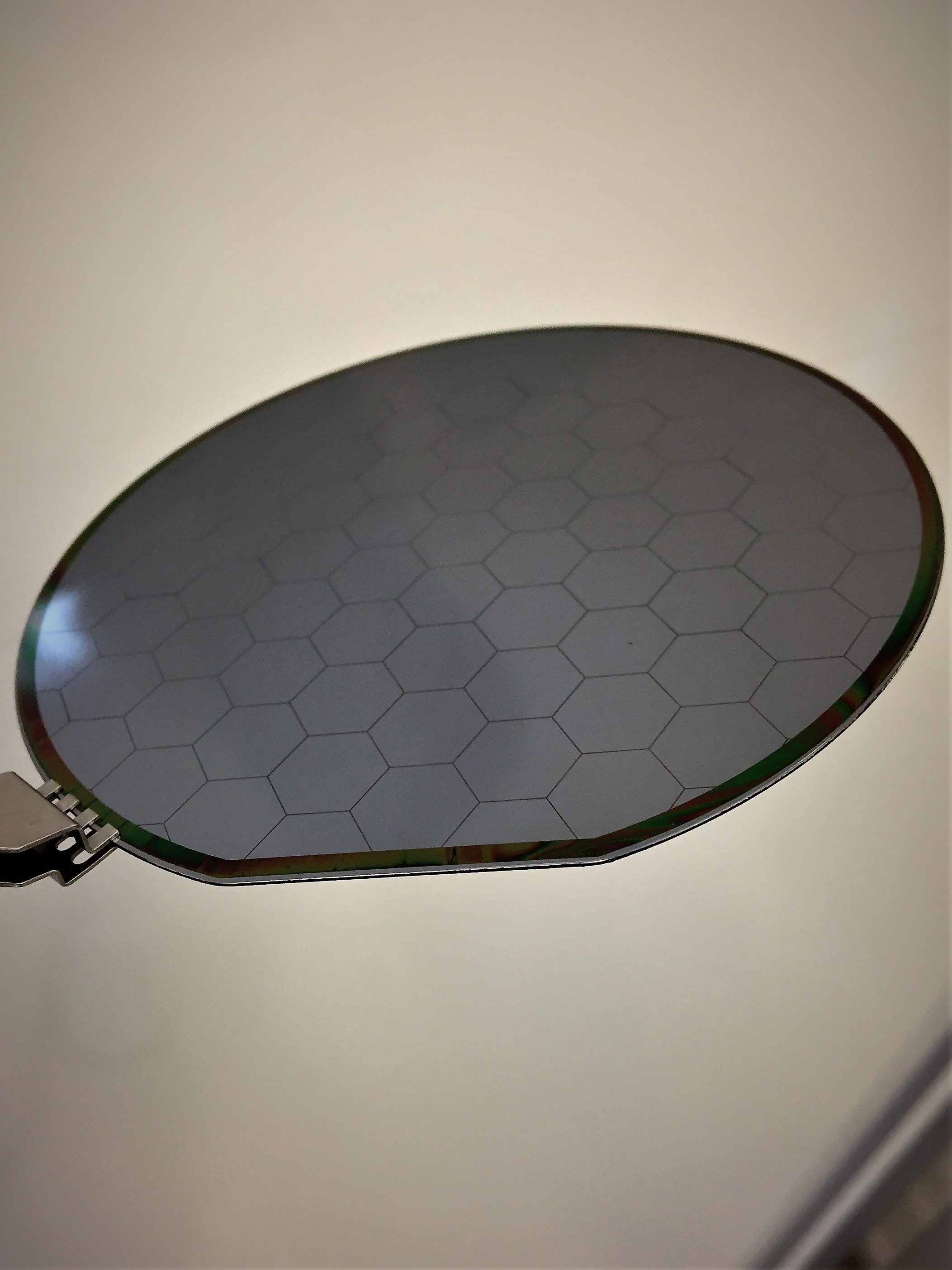

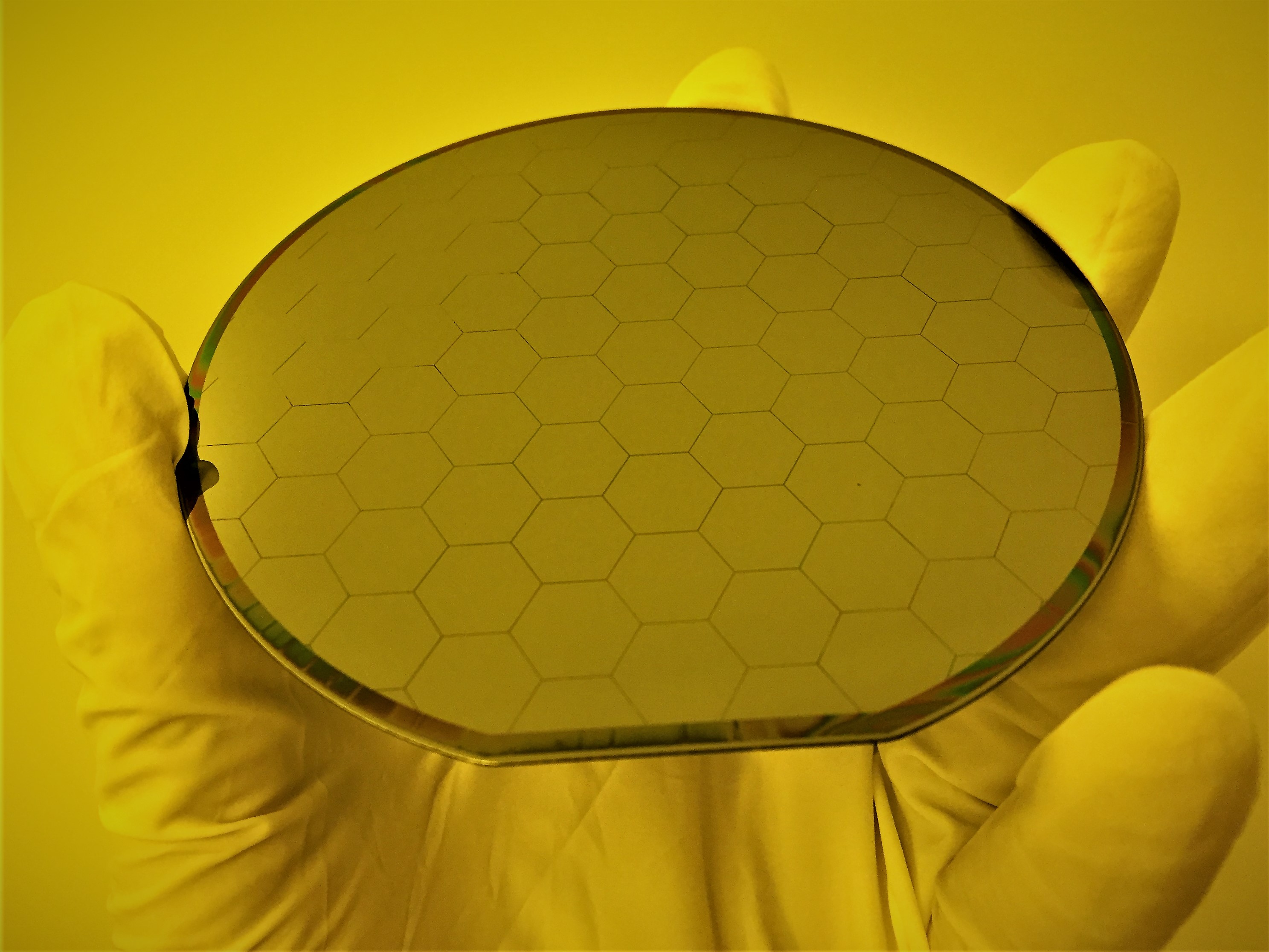

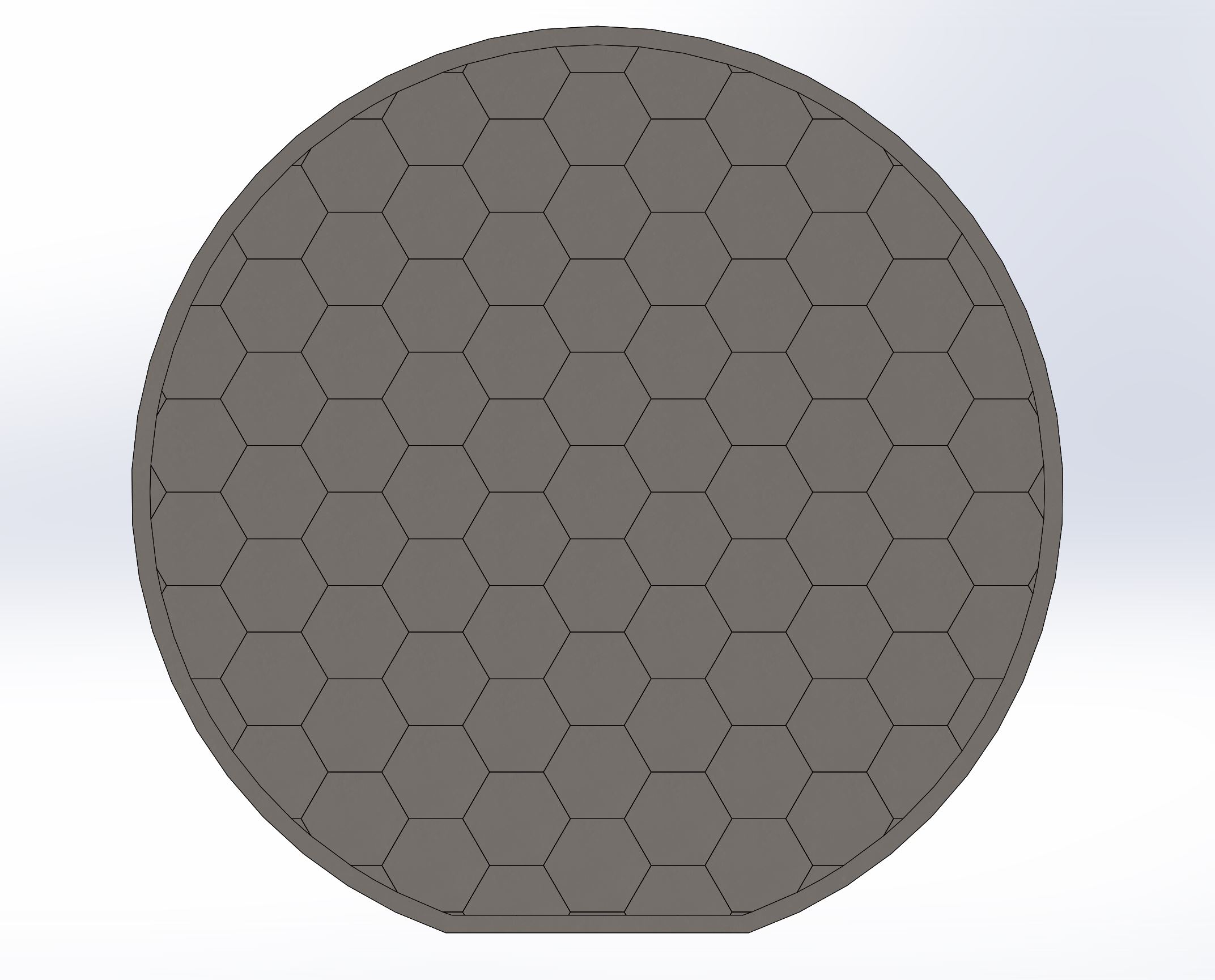

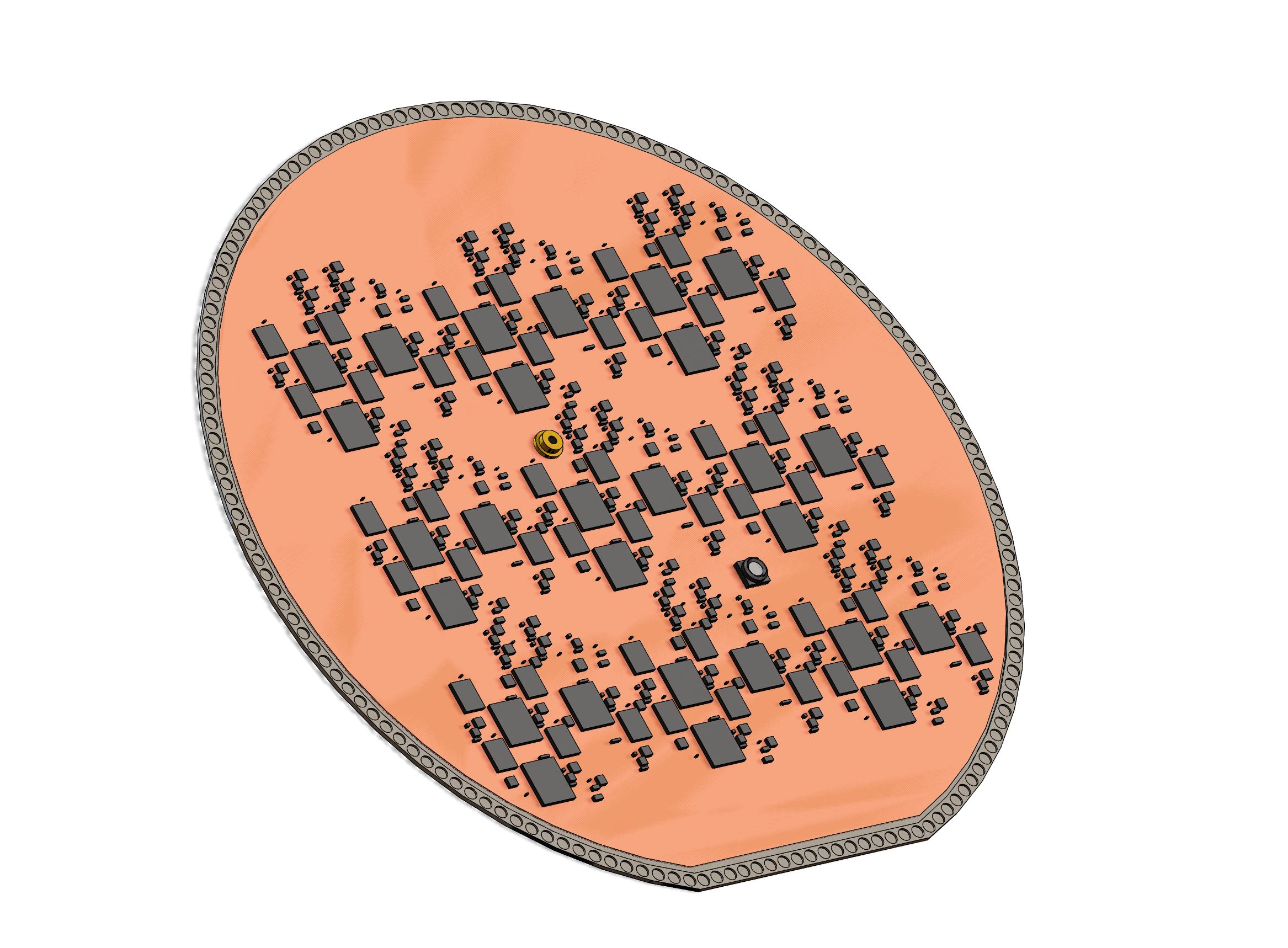




Funding
Funding for this program comes from NASA grants NIAC Phase I DEEP-IN – 2015 NNX15AL91G and NASA NIAC Phase II DEIS – 2016 NNX16AL32G and the NASA California Space Grant NASA NNX10AT93H as well as a generous gift from the Emmett and Gladys W. fund.
Contact
For more information please contact:
Nic Rupert
Development Technician,
Experimental Cosmology Group
Department of Physics,
University of California,
Santa Barbara, CA 93106-9530
nrupert@ucsb.edu
